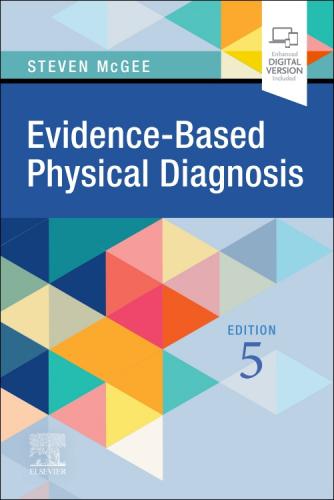Evidence-Based Physical Diagnosis
| Item Information | |
|---|---|
| Item#: | 9780323754835 |
| Edition | 05 |
| Author | McGee, Steven |
Part One: Principles of Family Medicine 1. The Family Physician 2. The Patient-Centered Medical Home 3. Psychosocial Influences on Health 4. Care of the Elderly Patient 5. Care of the Dying Patient 6. Care of the Self 7. Preventive Health Care 8. Behavioral Change and Patient Empowerment 9. Interpreting the Medical Literature: Applying Evidence-Based Medicine in Practice 10. Information Technology 11. Clinical Problem Solving 12. Integrative Medicine 13. Establishing Rapport 14. Interpreting Laboratory Tests
Part Two: Practice of Family Medicine 15. Infectious Diseases 16. Pulmonary Medicine 17. Ophthalmology 18. Otorhinolaryngology 19. Allergy 20. Obstetrics 21. Care of the Newborn 22. Growth and Development 23. Behavioral Problems in Children and Adolescents 24. Child Abuse 25. Gynecology 26. Contraception 27. Cardiovascular Disease 28. Common Office Procedures 29. Sports Medicine 30. Common Issues in Orthopedics 31. Neck and Back Pain 32. Rheumatology and Musculoskeletal Problems 33. Dermatology 34. Diabetes Mellitus 35. Endocrinology 36. Obesity 37. Nutrition 38. Gastroenterology 39. Hematology 40. Urinary Tract Disorders 41. Neurology 42. Human Sexuality 43. Clinical Genomics 44. Crisis Intervention, Trauma, and Disasters 45. Patients with Personality Disorders; Difficult Encounters 46. Anxiety and Depression 47. Delirium and Dementia 48. Alcohol Use Disorders 49. Nicotine Addiction 50. Substance Use Disorders

